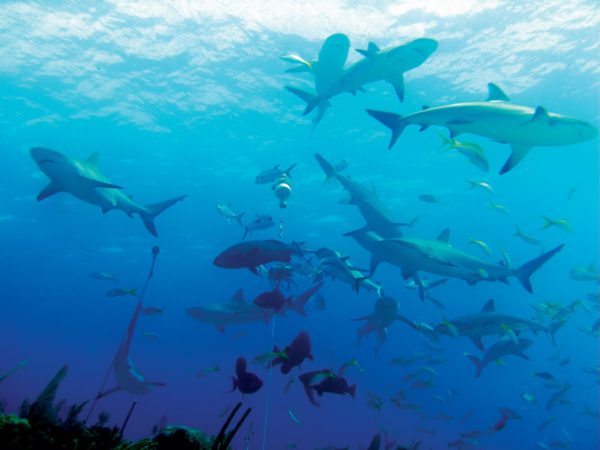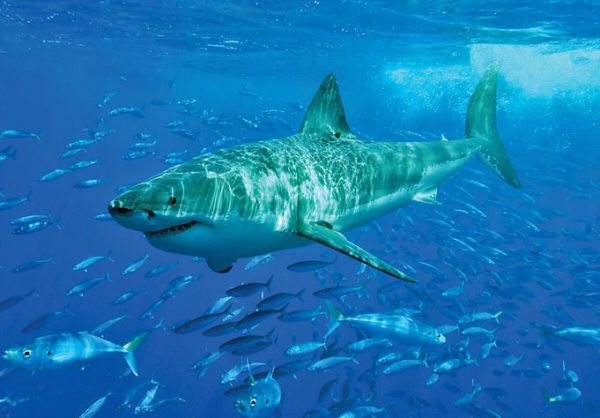
An international team of researchers studying globally declining shark populations report that they used carbon isotopes as biochemical markers in shark muscle tissue to identify where in the oceans the mobile predators have been feeding, in the hope that such analyses provide a useful tool for conservation.*
Michelle Staudinger, an adjunct faculty researcher at the University of Massachusetts Amherst, worked with her former environmental conservation department colleagues Amy Teffer and Francis Juanes, now at the University of Victoria, Canada, and lead author Christopher Bird at the University of Southampton, U.K. With an international research team representing 73 scientists from 21 countries, they show that shelf-dwelling sharks forage in a range of different coastal food webs, while deeper ocean sharks seem to get most of their food from specific areas of colder water in both the Northern and Southern hemispheres.
As Bird explains, “We were able to show that sharks living close to land and those that live in the open ocean have very different ways of feeding.” He adds that knowing which parts of the world’s oceans are important shark feeding areas may help conservationists to design more effective ways to protect declining populations. He says there are over 500 shark species identified around the world but scientists still know little about their habits and behavior, particularly as related to feeding and movement.
Staudinger, who contributed expertise in large pelagic predator foraging ecology to this research, says, “It’s been exciting to be a part of this collaborative effort and have data that we collected in regional waters off Cape Cod and the islands of Massachusetts contribute to a global understanding of how sharks move and feed.”

Teffer and Staudinger published a paper in 2014, when Teffer was completing her master’s degree with Juanes as her advisor, providing results from a broader sampling program led by Staudinger for sharks, tuna, dolphinfish, billfish and marine mammals from waters off New England down to South Carolina. It was this work, on large pelagic fish foraging ecology and transfer of mercury up the food chain that caught Bird’s attention at the University of Southampton and led to the UMass Amherst researchers joining his team.
For the current work, the research team used biochemical markers in muscle tissues from 5,394 sharks from 114 species to compare original sites of primary production, which vary across coastal, open ocean and deep-sea food-webs of the world’s oceans. Bird says, “If an animal feeds in the same place where it was caught, the carbon isotope signals in the shark and phytoplankton will match. However, if the shark has moved between feeding and where it was caught, then the signals will be different.”
Marine ecologist and senior author Clive Trueman, also at the University of Southampton, says results of this study “have important implications for conservation. Globally, sharks are not doing well. Many shark populations have declined in the last few decades, particularly in the wide-ranging oceanic sharks that are targeted by fishing boats and caught accidentally in tuna fisheries as ‘by-catch’. Governments are now creating large marine protected areas around the globe, which help to reduce fishing, but most of these protected areas are in tropical waters, and may not provide effective protection for oceanic sharks.”
One exception, Staudinger notes, in regional waters off New England is the Northeast Canyons and Seamounts, which was designated as the first Marine National Monument in the Atlantic Ocean in 2016. Ongoing work by Staudinger and her colleagues seeks to describe the community structure and diversity of prey species in this area to provide additional information on what resources are needed to conserve sharks and other large pelagic fauna.
Overall, Bird and colleagues suggest that “global-scale compilations of stable isotope data combined with biogeochemical modelling generate hypotheses regarding animal behaviors that can be tested with other methodological approaches.”
*Details appear in the current issue of Nature Ecology & Evolution.
Link to paper: http://www.nature.com/articles/s41559- 017-0432-z





